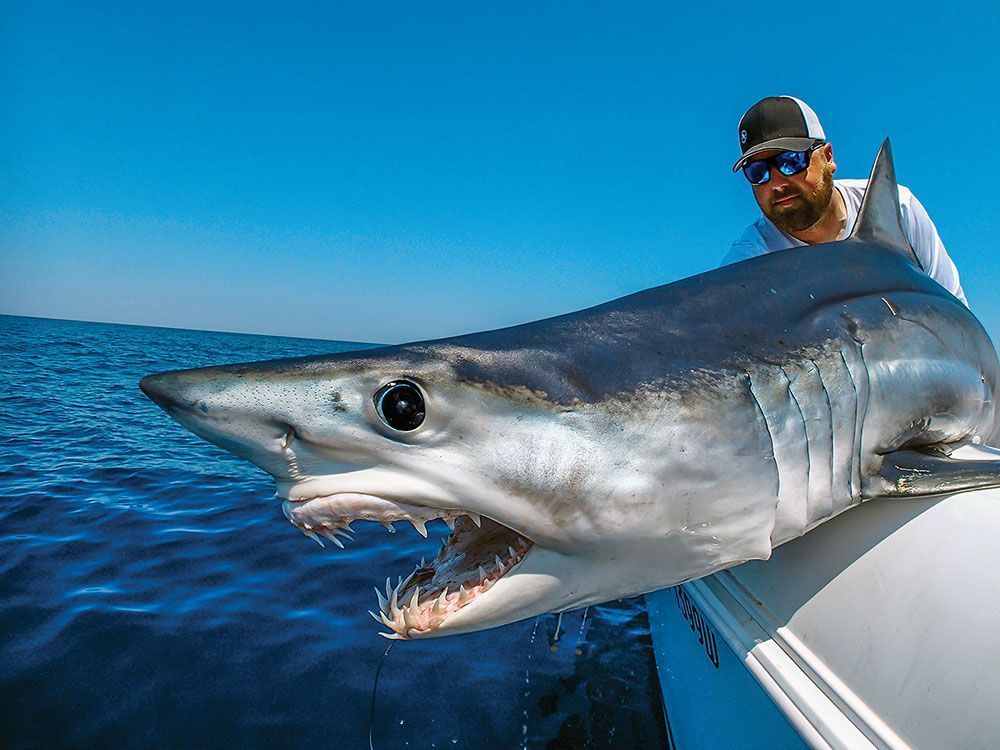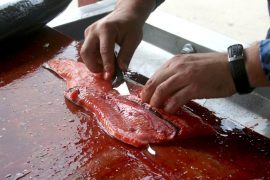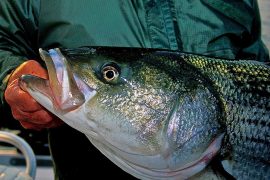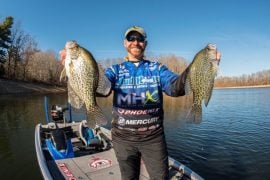
Mako fishing has changed since the days of meat hooks and Capt. Quinn. Modern aficionados know that the fastest shark in the sea is a sucker for high-speed baits.
Out of Hatteras Inlet, North Carolina, Capt. Kenny Koci trolls for makos in late winter and early spring. “When the big bluefish show up, big mako follow,” he says. On an overcast day, the sharks hunt on the surface. “I’ll see them swimming down-sea,” Koci adds, “and they often hang with hammerheads.”
As winter turns to spring, northern water pushes against the warmer Gulf Stream. Koci looks for makos along the edge on the offshore sides. The fish favor cooler temperatures in the mid-60s to low 70s. In the absence of a significant temperature change, he turns to ledges and drops in 30 to 100 fathoms.

Koci likes to troll Ilanders and large swimming lures. “Dark colors are the best — blues, blacks and purples,” he says. He rigs the Ilander skirt on an 18-inch section of No. 15 single-strand wire attached to a 25-foot leader of 200-pound-test that runs to a wind-on swivel and 80-pound mono on a 50-pound-class rod.
“I keep the boat in gear to keep the line tight,” he says. “Hopefully, that will keep the fish from jumping and landing on the line.” He also runs a big swimming lure from the flat line. “I like a smaller Marauder on a 6-foot length of Sevenstrand cable,” he says.

Mako Spread
Capt. Mark Sampson runs three lines off the transom when drifting for makos. The deepest bait (1) sits a few feet off the bottom, from 60 to 120 feet back. The second (2) rides 20 feet deep, under a ballon. The third bait (3) trails off the stern. Sampson also uses a kite to put a live bait (4) on the surface. And he hangs a chum bucket with a gallon of chum (5) off the transom to draw makos.

Bait Bites
Even time-tested bait-fishing tactics have taken a modern turn. Capt. Mark Sampson, who targets sharks out of Ocean City, Maryland, relies on chumming and soaking baits to attract makos to his hook.
His shark season runs from late May to early October, with the best shots early and late. “As soon as the water hits 56 degrees, I expect makos to show up,” he says. He focuses on the hills and valleys in 20 to 30 fathoms. Finding bait is most important,” he says.
…





